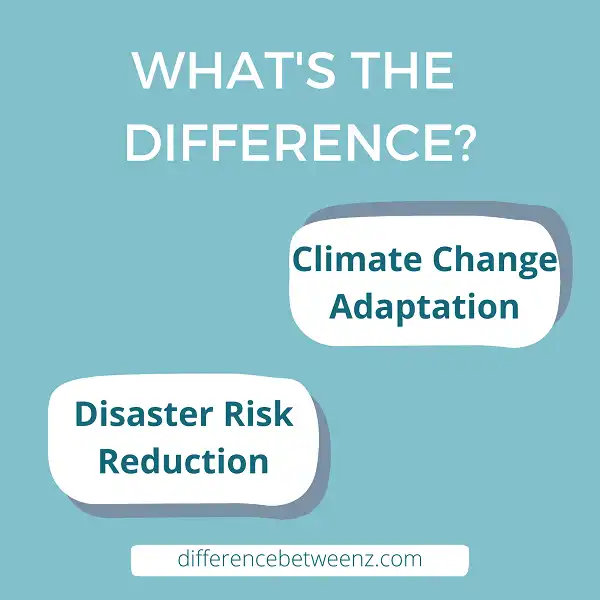Disaster risk reduction (DRR) and climate change adaptation (CCA) are two important fields of work that often overlap. However, there is a difference between the two: DRR focuses on reducing the risk of disasters happening, while CCA focuses on preparing for and dealing with the effects of climate change.
What is Climate Change Adaptation?
- Climate change adaptation is the process of making adjustments to natural or human systems in response to actual or expected climatic changes. The goal of adaptation is to minimize the negative effects of climate change and to take advantage of any potential opportunities. It is distinct from mitigation, which involves reducing greenhouse gas emissions in order to lessen future warming.
- Many adaptation strategies focus on enhancing resilience, or the ability of a system to withstand disturbances and continue functioning. For example, planting drought-tolerant crops or constructing levees are both adaptation measures that can help reduce the impacts of climate change.
- As the effects of climate change become more widespread and severe, adaptation will become increasingly important in order to protect people and natural systems from harm.
What is Disaster Risk Reduction?
Disaster risk reduction (DRR) is a proactive approach to identifying, assessing, and reducing the risks of disaster. It is a wide-ranging concept that includes actions taken at all levels to prevent or reduce the vulnerability of people and communities to disasters.
- DRR is an important part of sustainable development and resilience-building, and it is increasingly being recognized as a key factor in achieving the goals of the 2030 Agenda for Sustainable Development.
- In the aftermath of a disaster, DRR can help to reduce the risk of further damage, loss, and suffering by providing early warning systems, evacuation plans, and other measures.
- By planning for and investing in DRR, we can make our communities more resilient to the effects of disasters and build a more sustainable future for all.
Difference between Climate Change Adaptation and Disaster Risk Reduction
- Climate change adaptation and disaster risk reduction are two important approaches to dealing with the effects of climate change. Both involve taking steps to reduce the vulnerability of people and systems to climate-related risks, but they differ in their focus and approach.
- Climate change adaptation typically refers to long-term planning and measures that aim to reduce the overall vulnerability of a community or region to climate risks. This may involve changes to land use and infrastructure, as well as measures to improve the resilience of social and economic systems.
- Disaster risk reduction, on the other hand, focuses on preparing for and responding to specific events, such as floods or hurricanes. This approach often emphasizes early warning systems and evacuation plans, as well as efforts to protect critical infrastructure. While both climate change adaptation and disaster risk reduction are important, they require different approaches and strategies.
Conclusion
Disaster risk reduction (DRR) is the process of anticipating, preventing, preparing for, responding to, and recovering from disasters. It aims to reduce disaster risks through systematic efforts to identify, assess and manage the underlying causes of disasters. Climate change adaptation refers to adjustment in natural or human systems in response to actual or expected climatic stimuli or their effects, which moderates harm or exploits beneficial opportunities. It seeks to ensure that societies are resilient to current climate variability and future changes.


